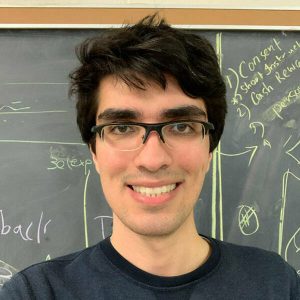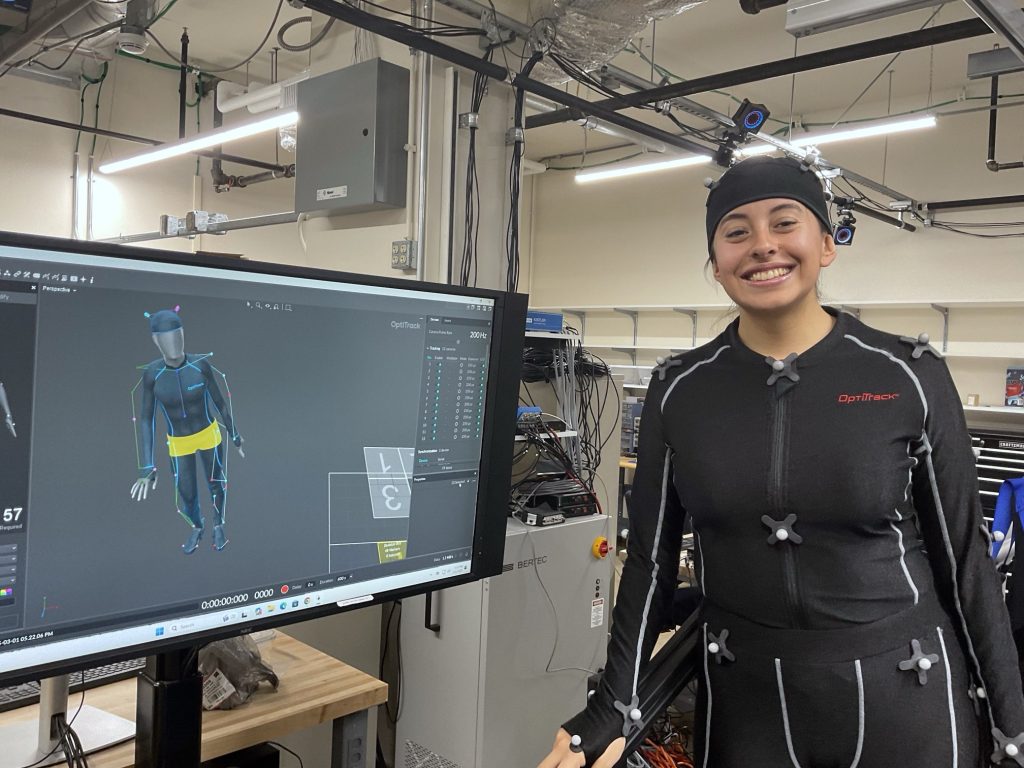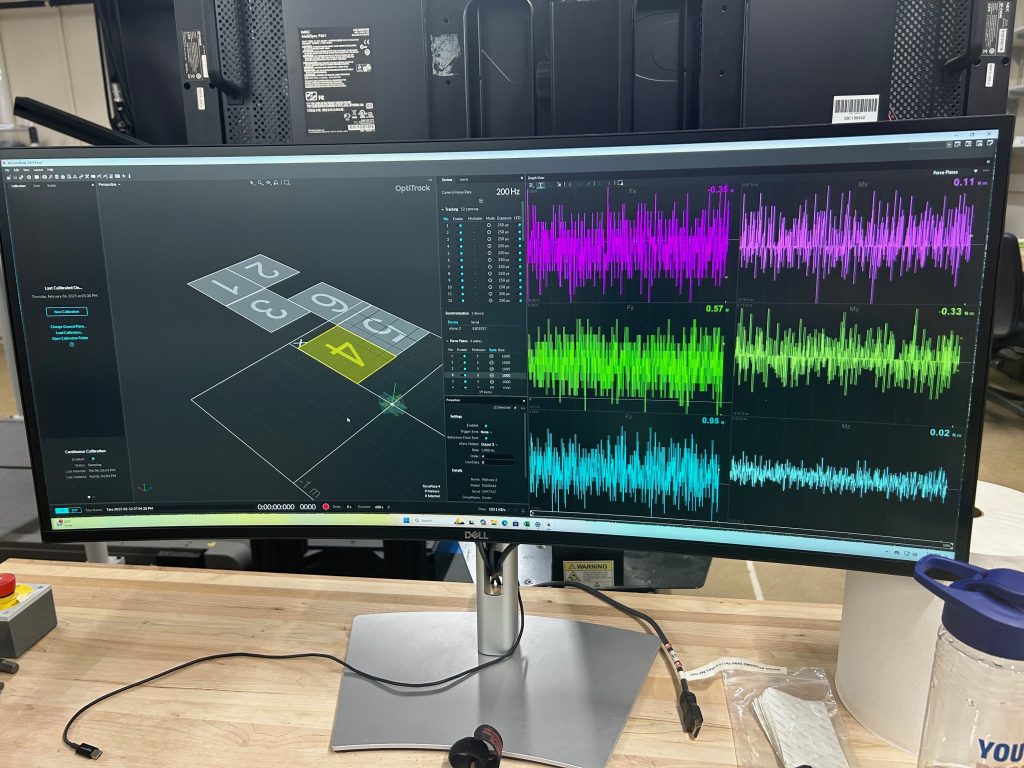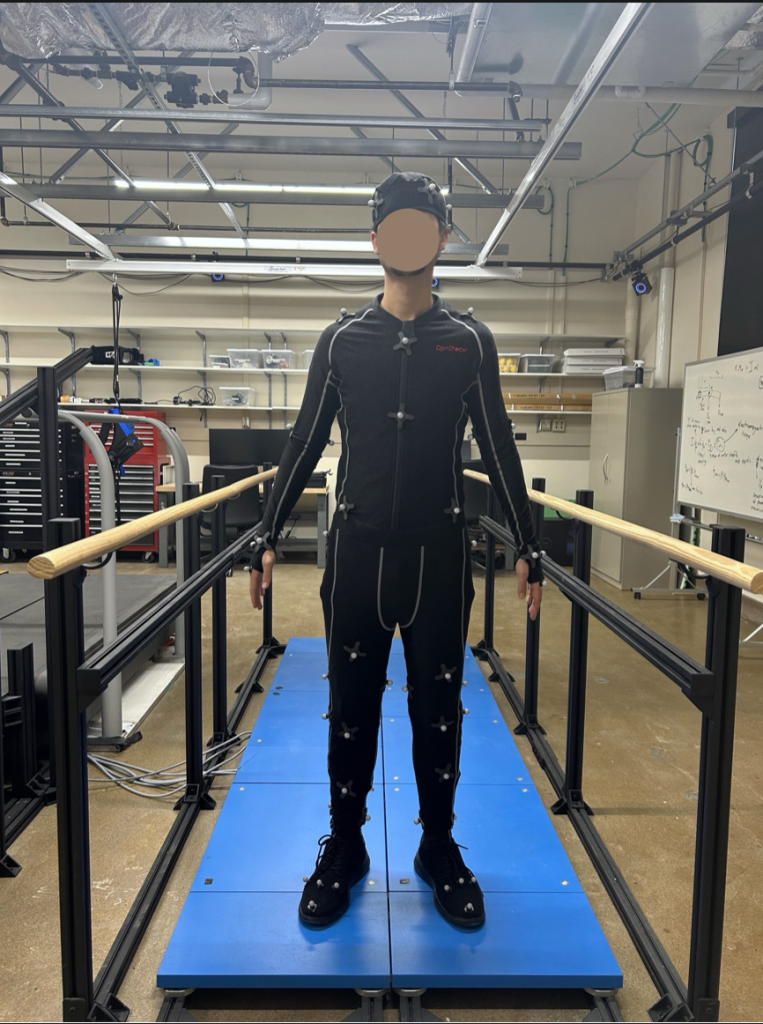Biomedical Engineer student
University of Notre Dame
University of Notre Dame
Portada » Science in Motion: Measuring the Impact of Every Step

Biomedical Engineer student

University of Notre Dame

University of Notre Dame
Have you ever stopped to think about the complexity behind something as everyday as walking? While it may seem simple, each step we take is the result of a surprisingly intricate process. It involves precise coordination between the nervous system, muscles, bones, and a constant application of forces to and from the ground. Behind this ordinary motion, lies a world of science and engineering dedicated to understanding it better.
In the fascinating world of biomechanics, Biomedical Engineering student Renata Ojeda took a step forward. Through the international internship program The Bridge Investigación, she spent two months at the Wearable Robotics Lab at the University of Notre Dame in the United States, working under the guidance of Professor Edgar Bolívar-Nieto. Her goal? To develop a more practical and accessible method for measuring the forces we exert while walking, a key metric for designing technologies that enhance people’s quality of life.
What do our feet tell us as we walk?
When your foot strikes the ground, the ground pushes back with an equal and opposite force, known as Ground Reaction Forces (GRFs). For scientists and engineers, GRFs act like an invisible footprint: they reveal how we move, how much weight we carry, and how that weight is distributed across our joints while walking, running, or jumping.
Until now, force platforms have been the standard tool to measure GRFs. While they provide precise measurements, they are expensive, require installation and calibration in specific spaces, and must be operated by trained personnel. Additionally, their use alters the natural way of walking, since the person must step exactly on a certain area for the data to be recorded correctly. This has driven the search for more portable, accessible, and realistic alternatives that better represent movement in everyday life.
One Step Closer to Reality
Renata, together with Professor Bolívar-Nieto and Mohsen Alizadeh Noghani, looked for a more practical and flexible way to study movement. To do so, they combined smart insoles (Moticon insoles), which measure the pressure under the feet, with a motion capture suit (OptiTrack) that, thanks to its markers, allows the body’s movement to be recreated in 3D. This approach makes it possible to study walking without the need for force platforms, reducing costs but, above all, offering greater freedom of movement, a key factor in the development of new technologies.

Renata in the lab using the OptiTrack motion capture suit
The experiment carried out by the research team was simple yet sophisticated. A volunteer walked on force platforms while wearing the smart insoles and the OptiTrack suit with markers. The technical process first required careful calibration of the systems. Then, the exact position of the insoles relative to the foot was calculated using an optimization method that determined the rotation and translation needed to align the data with the foot’s reference frame.



Data recording work in the laboratory, using smart insoles and a motion capture suit over force plates
Next, the movement of the joints was analyzed using an inverse kinematics model with the OpenSim tool, which provided the angles, velocities, and accelerations during walking. But what exactly is inverse kinematics? It is the study of movement in reverse, where, starting from the final position of an object, equations are used to describe the movement that led to it.
Finally, the information obtained from OpenSim with the inverse kinematics model was applied to develop an inverse dynamics model. This model makes it possible to calculate, from the angles and velocities of the joints, the forces and torques required for this movement. In this way, by applying Newton’s and Euler’s laws, the force that the ground exerts on the body at each step is calculated.
By combining this estimate with the pressure data from the insoles, the GRFs were obtained.
Turning Steps Into Solid Science
One of the first achievements was successfully estimating the Center of Pressure (CoP), the point where the force under the foot is concentrated while walking. When these results were compared with those obtained from the force platforms, the average differences were minimal: only 14 mm along the X-axis and 3 mm along the Y-axis. This demonstrates that smart insoles can very accurately capture how pressure is distributed in each step.
The position of the center of pressure along the X-axis (a) and Y-axis (b) is shown over time, comparing the data obtained from the insoles with that recorded by the force plates.
On the other hand, the vertical GRFs were also analyzed. The measurements obtained with the smart insoles followed a trend very similar to that of traditional force platforms, although with an average magnitude difference of approximately 75 newtons. In turn, the estimates generated through the inverse dynamics model showed some variations in the shape of the curves but remained within a comparable range.
Comparative graph of vertical ground reaction forces over time, obtained using three methods: force plates, smart insoles, and the inverse dynamics model.
There are still aspects to be refined, as well as the need for joint processing of both technologies (insoles and suit) for an accurate comparison with pressure plates. These findings represent a significant step toward new ways of studying human movement in a more accessible, portable, and realistic manner, closer to real-life conditions.
Biomedical Engineer student
University of Notre Dame
University of Notre Dame
The method proposed by the research team has great potential to become a valuable tool in the future, especially for designing personalized technologies such as prosthetics, assistive devices for people with reduced mobility, rehabilitation tools, and even systems to optimize athletic performance and prevent muscle fatigue. The next challenge is to refine the models and algorithms to achieve even greater accuracy.
This project exemplifies how a passion for research, empowered by the opportunity to collaborate internationally through programs like The Bridge Investigación, can generate insights that transform the way we understand the world. From Chile, contributions are also being made to take the next step: moving toward a more human-centered future.
Moving forward with purpose

Biomedical Engineer student